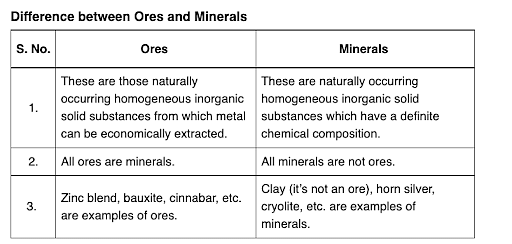Question:
Aluminium is used in thermite welding because-
Aluminium is used in thermite welding because-
Updated On: Jun 3, 2023
- aluminium is a light metal
- aluminium has more affinity for oxygen
- aluminium is a strong oxidising agent
- aluminium is a reactive metal
Hide Solution
Verified By Collegedunia
The Correct Option is B
Approach Solution - 1
The affinity for oxygen in the case of aluminium is higher than that of iron and therefore, it acts as a strong reducing agent with iron,
$Fe _{2} O _{3}+2 Al \rightarrow 2 Fe + Al _{2} O _{3}$
$Cr _{2} O _{3}+2 Al \rightarrow 2 Cr + Al _{2} O _{3}$
This is an important application in the melting of metals. The reaction, being exothermic, produces large amount of heat, thus melting the metal and the process is called thermite welding.
Was this answer helpful?
0
0
Hide Solution
Verified By Collegedunia
Approach Solution -2
You should be aware that thermite is a brand name for a granular combination of aluminum metal and powdered ferric oxide.
The reduction of the metallic oxide with Al is known as the thermite process.
Aluminum powder and ferric oxide are utilized in thermite welding. Aluminium has a higher affinity for oxygen, reducing the ferric oxide to elemental iron during welding and producing a lot of heat. The molten elemental iron so created will seal the damaged portions, resulting in a strong connection. Aluminum is also widely used due to its high boiling point and inexpensive cost. It is used to link railway rails during the welding process.
Here in this reaction, we can see that aluminum powder is used as it is a strong reducing agent and it reduces Fe2O3
to iron. Reduced molten iron sinks and flows into the gap of the grinder, thereby welding it.
Fe2O3+2Al→Al2O3+2Fe
The reduction of the metallic oxide with Al is known as the thermite process.
Aluminum powder and ferric oxide are utilized in thermite welding. Aluminium has a higher affinity for oxygen, reducing the ferric oxide to elemental iron during welding and producing a lot of heat. The molten elemental iron so created will seal the damaged portions, resulting in a strong connection. Aluminum is also widely used due to its high boiling point and inexpensive cost. It is used to link railway rails during the welding process.
Here in this reaction, we can see that aluminum powder is used as it is a strong reducing agent and it reduces Fe2O3
to iron. Reduced molten iron sinks and flows into the gap of the grinder, thereby welding it.
Fe2O3+2Al→Al2O3+2Fe
Was this answer helpful?
0
0
Hide Solution
Verified By Collegedunia
Approach Solution -3
Fe2O3( s)+2Al(s)⟶Al2O3( s)+2Fe(s)
Was this answer helpful?
0
0
Top Questions on General Principles and Processes of Isolation of Elements
- In the extraction of iron using blast furnace to remove the impurity (X), chemical (Y) is added to the ore. X and Y are respectively
- TS EAMCET - 2025
- Chemistry
- General Principles and Processes of Isolation of Elements
- What is used for the Thermite Reaction?
- BCECE - 2025
- Chemistry
- General Principles and Processes of Isolation of Elements
- Which of the following compounds is used to cover the surface of a metallic object to prevent corrosion?
- KEAM - 2025
- Chemistry
- General Principles and Processes of Isolation of Elements
- Select the correct statement:
- KCET - 2024
- Chemistry
- General Principles and Processes of Isolation of Elements
- On reaction of Lead Sulphide with dilute nitric acid which of the following is not formed ?
- JEE Main - 2024
- Chemistry
- General Principles and Processes of Isolation of Elements
View More Questions
Concepts Used:
General Principles and Processes of Isolation of Elements
What are Ores and Minerals?
Minerals are the naturally occurring, homogeneous inorganic solid substances. They are having a definite chemical composition and crystalline structure, hardness and color. For example, copper pyrite, calamine, etc.

Impurities in an ore are called gauge. The removal of a gauge from the ore is called concentration ore.
Several steps are involved in the extraction of pure metal from ores. Major steps are as follows –
- Concentration of the ore
- Isolation of the metal from its concentrated ore
- Purification of the metal